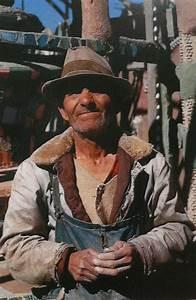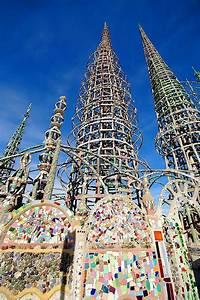Average Americans – including fellow Italian Americans – often express puzzlement, even frustration, with myself and others via our strong opposition to endless “mob movies.”
Their responses are fairly predictable: “They’re just movies,” “No one believes everything they see,” and “[Italian Americans] aren’t overly sensitive, we can take a joke.”
To which I reply:
1) Yes, they’re movies – 500 and counting, with 81% of them produced since The Godfather in 1972. And 90% of those mob characters are fictional (including Don Vito Corleone and Tony Soprano). They are based on nothing but the accepted crude stereotypes. 2) If I had a dollar for every time someone said to me, “Hey, you’re Italian? Do you know anyone in the mafia?” I’d be living in a villa in Tuscany. And incidentally, I’ve had everyone from unsophisticated high school kids to learned professors with Ph.D’s ask me that question. People do believe.
3) There’s a difference between laughing at a joke and being the continual butt of a joke.
In sum, there is actually a more powerful response to such claims:
4) Mob movies obscure our true history in America, which is anything but criminal.
Case-in-point: Simon Rodia, someone ten times more interesting than any of Martin Scorsese’s goodfellas. People know Joe Pesci; they don’t know Rodia.
Simon Rodia who? Exactly.

Rodia was in the news lately – or, rather, his famous Watts Towers were via a ten-minute YouTube video by the LACMA (Los Angeles County Museum of Art). In it, conservator Elisabetta Perfetti shows the restoration work being done on these bizarre, fantastical structures, a series of spires which dominate an area more known for its infamous riots in 1965 than Rodia’s art works (which, interestingly, survived; the locals were proud of them and protected them).
First of all, what are the Watts Towers? Named a National Historic Landmark in 1990, they are basically folk art versions of the great super-structures of Italy, whether the Leaning Tower of Pisa or the buttresses atop Milan’s cathedral. Most of all, they are the product of that special genius which seems to permeate the Italian imagination, from giants like Da Vinci and Michelangelo to Simon Rodia himself, a literal small man (4’10” inches) who couldn’t explain the genesis of his talent any more than others could.

When asked what inspired his vision, he replied in his broken English, “I had it in mind to do something big, and I did.”
The understatement of the century!
Rodia’s background was as mysterious as his towers. A private man, Sabato “Simon” Rodia (he also went by Sam), came to Los Angles after first emigrating to the U.S. (Pennsylvania) in 1895 as a fifteen-year-old, accompanied by his brother. After his brother died in a mining accident – an incident which may have set off Rodia’s life-long love of the bottle, as well as bouts of mental illness and broken marriages – Rodia went to the West Coast, eventually settling in Oakland.
In 1921, however, he purchased a piece of land in Watts, California, where, over the next 33 years, he focused much of his time building his iconic towers, using nothing more than a hammer, plier, and crowbars. Incredibly, he also used what can only be described as his acrobatic skills: He had no safety devices of any kind; he scurried up the towers like a spider, held in-place by makeshift metal girders around his body.
What did Rodia use to build his poor-man’s version of Brunelleschi’s dome? You name it: wire, concrete, sea-shells, rocks, pieces of shiny glass or gleaming ceramic – anything at hand. By the time he finished the project in 1954, his three towers (one of them 100 feet tall) stood over the southern California landscape like the Hollywood sign on the Santa Monica Mountains.
Christening his creation “Nuestro Pueblo” (Our Town, reflecting the multi-cultural make-up of his neighborhood), Rodia put down his tools and, like many an eccentric artist, promptly disappeared. He spent the rest of his years with relatives in Martinez, California, though appearances at the San Francisco Museum of Modern Art and the University of California at Berkeley in 1961 brought crowds to their feet. He died on July 17, 1965, at 86 years old.
Italian American author Dom DeLillo paid tribute to Rodia in his novel Underworld, to wit: “When he finished the towers, Sabato Rodia gave away the land and all the art that was on it. He left Watts and went away, he said, to die. The work he did is a kind of swirling free-souled noise, a jazz cathedral.”
I like this quote by Italian sculptor Gio’ Pomodoro even more: “Hail to the innocent [Antonio] Gaudi of California, who destroyed the myths of Disneyland and Movie-Land in a swift, isolated competition.” In short, Italian creativity always triumphs over fake creativity.
The above two quotes are from a recent article in the Los Angeles Times on Rodia by Christopher Reynolds (“Watts Towers at 100: Junk Turned Into Art Still Casts a Spell,” December 24, 2021). And there is a 2006 documentary on Rodia called, I Build the Tower by Edward Landler and Brad Byer.
But, there needs to be more about Rodia than just an occasional article or little-seen documentary. Even that black-and-white photo of Rodia on the cover of the Beatles’ famous album Sgt. Pepper’s Lonely Hearts Club Band is more witty than enlightening.
Where is the major Hollywood biopic? Couldn’t Joe Pesci go out in glory playing Simon Rodia rather than another vertically-challenged psychopath? Shouldn’t American textbooks relate how Rodia’s talent towered over Los Angeles far more lastingly than Al Capone’s beer empire? Shouldn’t the average Italian American be able to draw a connection between Rodia’s home-grown achievement and the Italian genius for architecture in general?
Indeed, there is even a classical connection: Rodia’s roots have been traced to the town of Serino, near Naples, where Augustus built a version of his Aqua Augusta to service that region of Italy (30-40 B.C.). Italian ingenuity and genius are in the blood, regardless of where they emigrate in the world.
The next time I’m accused of being “over-sensitive,” I’ll ask the questioner if they know about Simon Rodia. Their blank stares will tell me all I need to know. Endless mob movies have accomplished their goal: the destruction of curiosity – even via seeking the truth beyond accepted ethnic narratives. Sad! -BDC




Thanks for sharing this article about Simon Rodia…he is a folk artist legend…and I have been a big fan….I also have a small collection (because I can’t find pieces) of early California tile. They are amazing due to their brilliant colors, and design..it was a fad thing from the 1920s through the 1940s. Patterns and color formulas were under strict security, by the WWII war years most ceased production, labor, and supplies being the big issue. The Rodia connection to this comment was that his real job was working in one of the LA tile companies post-WWII (Wonder if he had to register as an enemy alien??) Another group that was inspired by Rodia’s works is actually in Philadelphia, the Magic Gardens…a favorite spot, where like the Watts Tower most of the artwork is via recycled materials and has a high fan base.
Have you ever heard of the Depression-WWII Era NYC politician Vito Marcantonio? He was a real man of the people, a true progressive in every sense of the word. His constituents in East Harlem loved him. For some reason, PBS has never done a special on his life.
Rodia: Even Danny DeVito should consider a biopic. But, would audiences take him seriously, given his slew of goofy roles? You never know. It would probably have to be a non-Italian actor of short stature (such as the current Peter Dinklage) to do it.
Interesting fact: Lou Costello was in negotiations to play Mayor LaGuardia in a 1950s “serious” film. Alas, Costello died before the project could be air-lifted.
And Marcantonio? He was mentored by LaGuardia. The middle-aged Al Pacino could have scored a triumph playing Marcantonio in a major film, no?
People who say they are just movies do not know the harm these moves have and are doing. If they were do some research it would be very clear. In the political correct world we live it is hard to believe that we are still free game!
Same story for Luigi Del Bianco, chief carver of Mount Rushmore.
Nobody knows him.
https://www.luigimountrushmore.com/
No documentaries on George Moscone, assassinated mayor of San Francisco, The New Orleans Massacre, Luigi Palma di Cesnola, first Director of the Metropolitan Museum of NY and donator of the Cesnola Collection!
WE must come up with a way to bring all this to the forefront!
Hi Bill,
I also abhor Italian-American stereotypes because I have been called many names due to them, and because there is such a double-standard in allowing America to do this to our ethnic group. I do try to speak out on them when I see them.
Let me know what more I can do.
Thanks